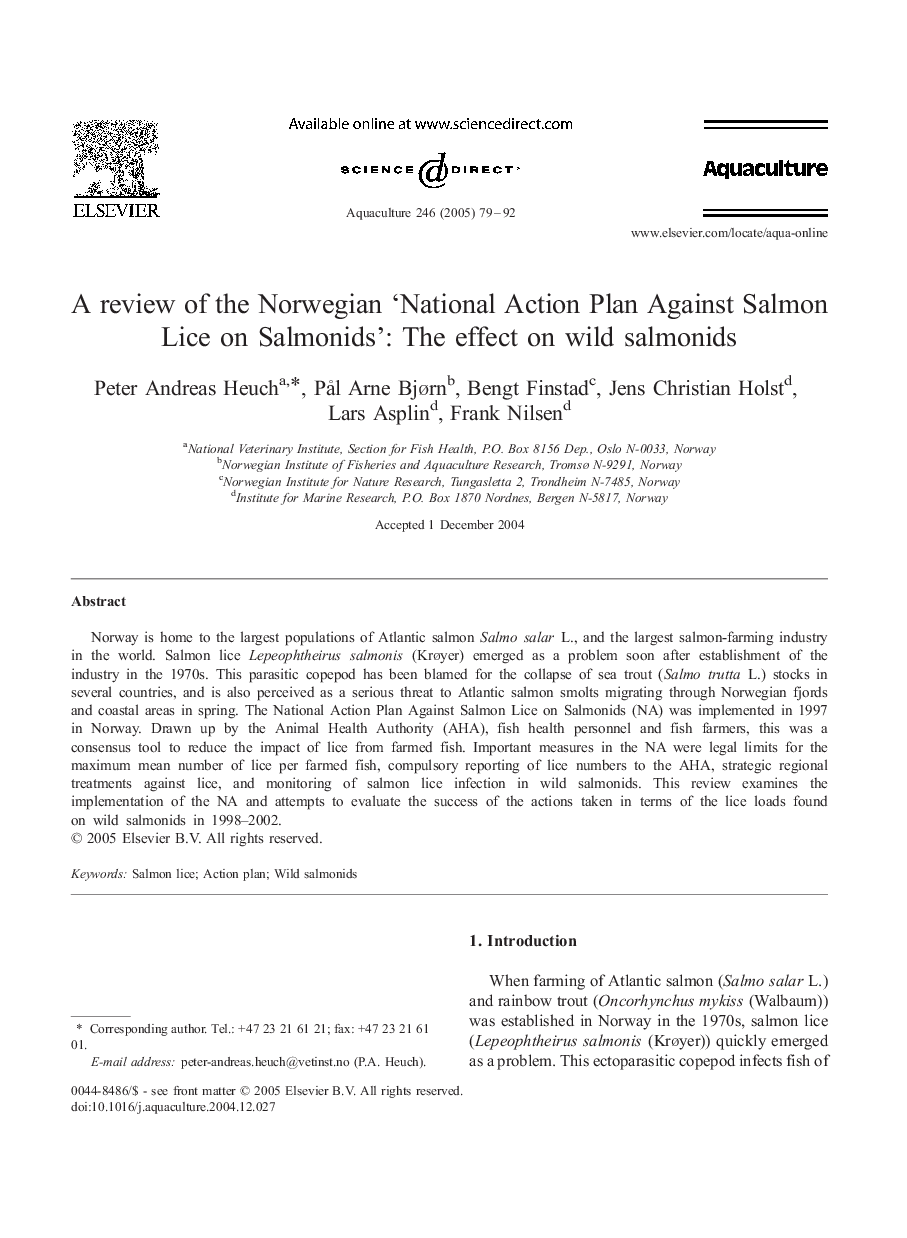| Article ID | Journal | Published Year | Pages | File Type |
|---|---|---|---|---|
| 8974727 | Aquaculture | 2005 | 14 Pages |
Abstract
Norway is home to the largest populations of Atlantic salmon Salmo salar L., and the largest salmon-farming industry in the world. Salmon lice Lepeophtheirus salmonis (Krøyer) emerged as a problem soon after establishment of the industry in the 1970s. This parasitic copepod has been blamed for the collapse of sea trout (Salmo trutta L.) stocks in several countries, and is also perceived as a serious threat to Atlantic salmon smolts migrating through Norwegian fjords and coastal areas in spring. The National Action Plan Against Salmon Lice on Salmonids (NA) was implemented in 1997 in Norway. Drawn up by the Animal Health Authority (AHA), fish health personnel and fish farmers, this was a consensus tool to reduce the impact of lice from farmed fish. Important measures in the NA were legal limits for the maximum mean number of lice per farmed fish, compulsory reporting of lice numbers to the AHA, strategic regional treatments against lice, and monitoring of salmon lice infection in wild salmonids. This review examines the implementation of the NA and attempts to evaluate the success of the actions taken in terms of the lice loads found on wild salmonids in 1998-2002.
Keywords
Related Topics
Life Sciences
Agricultural and Biological Sciences
Aquatic Science
Authors
Peter Andreas Heuch, Pål Arne Bjørn, Bengt Finstad, Jens Christian Holst, Lars Asplin, Frank Nilsen,
